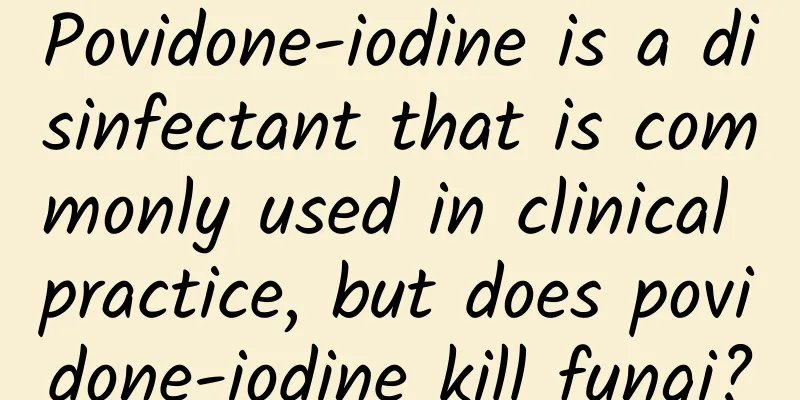Povidone-iodine is a disinfectant that is commonly used in clinical practice, but does povidone-iodine kill fungi?

|
Iodine tincture can kill fungi. Because iodine tincture is a broad-spectrum disinfectant, it can kill bacteria, fungi, parasites and some viruses that breed in the affected area. When fungal infections induce skin diseases or vaginitis, applying iodine tincture can have a certain therapeutic effect. Tinea manuum and tinea pedis are both diseases caused by fungal infections. They are often accompanied by peeling, itching and other discomfort symptoms, and require the use of antifungal drugs. Iodine tincture is a commonly used disinfectant in clinical practice. Some patients want to apply iodine tincture to the affected area. Does iodine tincture kill fungi? |
<<: Will there be any pain when doing a transvaginal ultrasound?
>>: Gynecological diseases must be treated promptly. What is the cause of the fishy smell?
Recommend
Lose weight by following your menstrual cycle ~ 4 stages of TCM to lose weight faster without getting stuck
I believe that when it comes to "period"...
What should I do if I find an ovarian cyst after pregnancy?
The pregnant mother was just immersed in joy when...
Can fasting for breakfast help you lose weight? 3 principles of healthy breakfast, light meals will keep you from gaining weight
Can I lose weight by skipping breakfast? Doctors ...
Why does cervicitis lead to infertility?
Cervicitis is a relatively common gynecological d...
Drink fresh milk and eat yogurt! Low GI dairy products help lose weight
Are you eating yogurt to help you lose weight? Ma...
What are the causes of adnexitis?
What are the causes of adnexitis? Adnexitis is a ...
What is a physiological ovarian cyst? How to treat a mild ovarian cyst?
What about physiological ovarian cysts? How to tr...
How to properly care for patients with hyperprolactinemia after surgery
Hyperprolactinemia seriously affects women's ...
What are the diagnostic methods for Bartholinitis?
Bartholinitis has a huge impact on women's bo...
What are the key points to pay attention to in the care of common ectopic pregnancies?
In our lives, many female compatriots will have e...
For people who eat out to lose weight, dinner is the key! Master 4 tips for dinner to avoid obesity
Of the three meals a day, when you get home from ...
What should I do if I have abnormal menstruation after wearing an IUD?
What should I do if I have abnormal menstruation ...
What are the symptoms of adenomyosis?
What are the clinical symptoms of adenomyosis? Ma...
What causes left ovarian cyst?
Treatments for left-sided ovarian cysts include m...
What are the drugs for treating candidal vaginitis?
Vaginitis is a very common gynecological inflamma...









